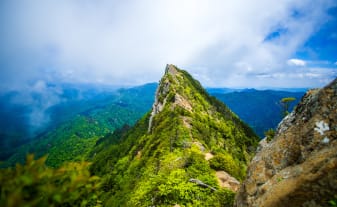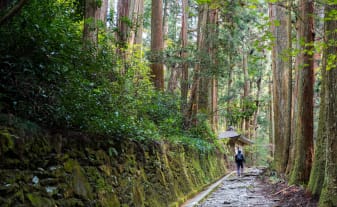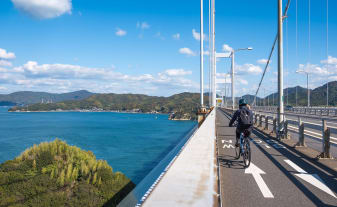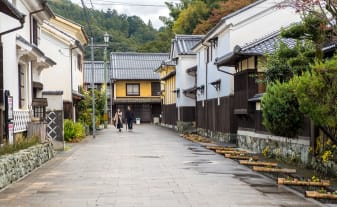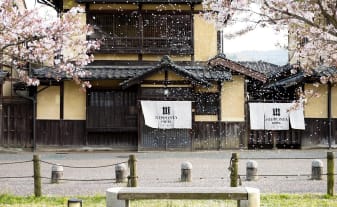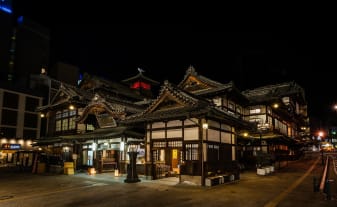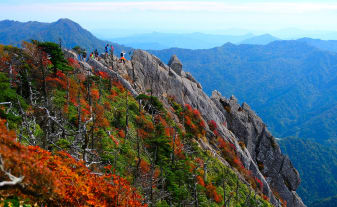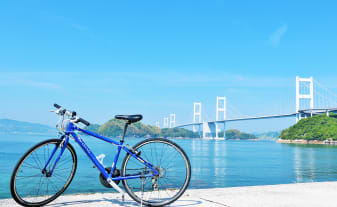 STORIES & GUIDES
STORIES & GUIDES
Miyaura Port, Gateway to the Gods

Berth your superyacht at Miyaura Port (Miyaura Sea Station) on the island of Omishima to embrace true escapism and connect with a deep sense of place and history. Time slows as you explore the island: wandering the grounds of the oldest shrine in Shikoku; enjoying a breezy bike ride; visiting viewpoints with breathtaking vistas; discovering world-class art museums; and savoring the region’s finest cuisine.
-
What to Know About Miyaura Port
Miyaura Port, also known as Miyaura Sea Station, is located on Omishima, part of the city of Imabari in eastern Ehime. The port has easy access to the Shimanami Kaido, the approximately 70-kilometer-long cycling route that spans six islands and connects the prefectures of Hiroshima and Ehime.
● Operating period: Year-round except during the Tsuruhime Festival, in July
● Berthing capacity: Maximum vessel length of 60 m (196.8 ft), maximum draft of 4.4 m (14.4 ft)
● Reservations: Bookings can be made via email. Please find more information here.
● Maximum mooring time: 10 days (for vessels over 24 m (78.7 ft))*
● Port fees: Mooring and entry fees apply (must be paid in cash)
● Shore power: Available
● Water refill: Available
● Refueling: Not available
● Waste disposal: Not available
*In some cases, stays of up to one month may be permitted. Please inquire at the time of booking. -
What’s Nearby?
It is only a 10-minute walk from the jetty to the town center of Miyaura, where there are supermarkets, banks, post offices, cafes, restaurants, bars, and a hospital. With a car, it’s about a 5-minute drive to Mare Gracia, a hot-spring bathhouse. Most places on the island can be reached in 20 minutes or less by car.
-
The Island of the Gods
Omishima has long been known as the “Island of the Gods” for its importance in Shinto mythology. Discover Oyamazumi Shrine on the west coast of the island, the oldest shrine in Ehime, believed to have been founded in the eighth century. Ancient camphor trees, one approximately 3,000 years old, stand on the shrine grounds as a testament to centuries of worship. The shrine is dedicated to Oyamazumi, a guardian deity of the sea, mountains, seafaring, agriculture, and warfare. It is the head shrine of over 10,000 shrines dedicated to Oyamazumi across Japan. The shrine’s treasure hall houses an unparalleled collection of samurai arms and armor, including 8 National Treasures and 682 Important Cultural Properties. Many of these artifacts were donated by military leaders seeking success in battle.
Among them is the only known piece of samurai armor thought to have been made for a woman: a breastplate believed to have belonged to the legendary Tsuruhime. She was the daughter of the chief priest of Oyamazumi Shrine and is said to have led a naval clan in the defense of the island during the Warring States Period (1467–1568). Known as Japan’s Joan of Arc, she is commemorated with statues around Omishima, including one notably installed in the waters of Miyaura Port. -
Center of the Cycling Highway
Omishima is located roughly halfway along the popular Shimanami Kaido, making it a premier destination for cycling enthusiasts. The island has a range of cyclist-friendly amenities and facilities, including Shimanami Omishima Wakka, a cycle hub and guesthouse. Rent a bicycle to explore the island and beyond. A picturesque 45-kilometer route circles the island, covering mostly gentle terrain. For panoramic views, take a detour up to the summit of sacred Mt. Washigatozan (436 m), the highest point on Omishima.
-
An Art Excursion
Art, nature, and architecture intersect in Omishima’s museums and installations, which are typically designed to harmonize with the island’s natural beauty and landscapes.
On the slopes of Ararat Hill is the Tokoro Museum Omishima. Its design imagines what Noah’s Ark might have looked like had the biblical ship come to rest in Ehime. The museum’s unique structure merges with its surroundings, making the art, the building, and the vistas part of the experience. Nearby, the Toyo Ito Museum of Architecture showcases the sketches and models of renowned architect Toyo Ito. His works are displayed in eye-catching, avant-garde exhibition spaces: one a dramatic, black, polyhedral building, and the other, a reproduction of Toyo Ito’s own Tokyo residence. The Omishima Museum of Art exhibits a collection of nihonga paintings by leading Japanese artists from the 1970s to the early 2000s. The museum’s walls are lined with washi paper, imbuing the interior with a gentle ambience.
On the grounds of an abandoned school-turned-accommodation, the Ken Iwata Mother and Child Museum encourages visitors to contemplate motherhood in a serene space by the sea. Enclosed within a circle of nondescript concrete are 44 sculptures designed around the theme of the maternal bond in diverse forms. At set times, music flows through the space, enhancing the atmosphere. On the northern side of the island, the Santo Murakami Memorial Museum of Calligraphy presents calligraphic works, appealing to connoisseurs of this traditional Japanese art form. -
Supporting Local Initiatives
Omishima is at the forefront of community-driven initiatives within the Seto Inland Sea, with a strong focus on local craftsmanship and sustainability.
Omishima Minna no Winery is a grassroots project led by Toyo Ito to revitalize the community by transforming abandoned citrus groves into vineyards. The winery produces exclusive wines that reflect the island’s distinctive terroir, which is shaped by its fertile soil and gentle climate. Near the port, Omishima Brewery is a friendly brewpub operated by a couple passionate about craft beers. On the island’s western side, the whimsical Omishima Limone sells lemon-themed artisanal goods, from cakes and juices to crafts and handbags. Close to the coast is Karinya, a lemon cordial store that serves refreshing drinks in a quaint house with impressive chalk art signage. For refined fragrances that capture the essence of the island, Shimakobo Omishima is a natural cosmetics store that sells soaps and scents crafted from locally sourced botanicals. -
Explore Further
Miyaura Port’s central location makes it a convenient starting point for exploring other islands in the Seto Inland Sea. Immediately north of Omishima is the island of Okunoshima, famous for its rabbits and former military installations. Other ports in Ehime welcoming superyachts include Matsuyama Sightseeing Port, with access to the prefectural capital and Dogo Onsen, one of Japan’s oldest hot springs, and Yuge Port in Kamijima, a hidden gem in the heart of Setouchi. Miyaura Port is also close to Hiroshima Prefecture for easy exploration of downtown Hiroshima and sites such as the iconic Itsukushima Shrine on the island of Miyajima.
-
Super Yacht
-
Scenic Views
-
Outdoor Adventure
-
Eastern Ehime (Toyo)
-
Museums & Galleries
-
Family Friendly
-
Shrines
-
Cycling
-
Coastline & Sea
-
Art & Architecture
-
Souvenirs
-
Cultural Heritage
-
Historic Sites & Monuments
-
Sustainability & Conservation
-
Spring
-
Autumn
-
Temples
-
Summer
Related Articles
Eastern Ehime (Toyo)
Cycle the Shimanami Kaido, explore the islands and whirlpools of the Seto Inland Sea, and delve into the Toyo region’s industrial heritage.














